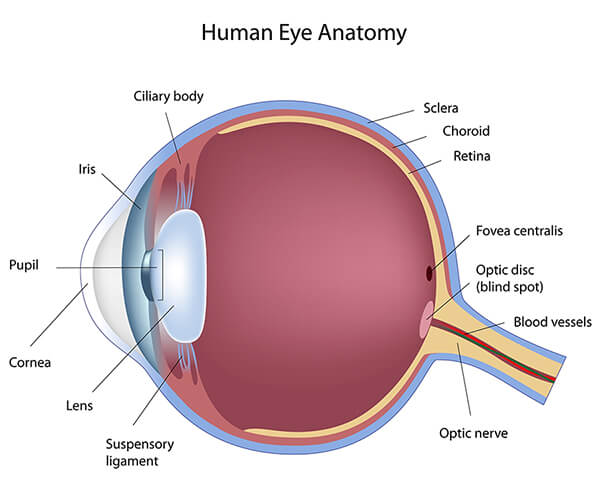Being only about 1″ wide, 1″ deep and 0.9″ tall, the eye is a compact and amazingly complex organ.
The tough, outermost layer of the eye is called the sclera. This maintains the shape of the eye. The front part of this layer is clear and is called the cornea. All light must first pass through the cornea when it enters the eye. Attached to the sclera are six muscles that move the eye, called the extraocular muscles.

Seibel Vision Surgery provides this on-line information for educational and communication purposes only and it should not be construed as personal medical advice. Our mission is to provide an overview of these topics. For more in-depth information, please discuss any vision issues with Dr. Seibel or other eye care professional.
Information published on this web site is not intended to replace, supplant, or augment a consultation with an eye care professional regarding the your own medical care. Seibel Vision Surgery disclaims any and all liability for injury or other damages that could result from use of the information obtained from this site. Please read our full disclaimer.
At Seibel Vision Surgery, your eyes and vision are of paramount importance. To help you make the most informed decisions regarding the welfare of your vision, we are delighted to be of service and are happy to answer any questions you may have.
Please take the time to familiarize yourself with the information contained on this site. We have compiled it especially for you!
Monday, Tuesday, Wednesday, and Thursday
8:30 a.m. to 3:30 p.m.
Friday
8:30 a.m. to 3:00 p.m.
OUR ADDRESS
11620 Wilshire Boulevard, Suite 711
Los Angeles, California 90025
PHONE
(310) 444-1134
FAX
(310) 444-1130
Learn about cataracts and their treatment
Learn more about CataractsGlaucoma, Macular Degeneration,
Medical Eye Exams, and other